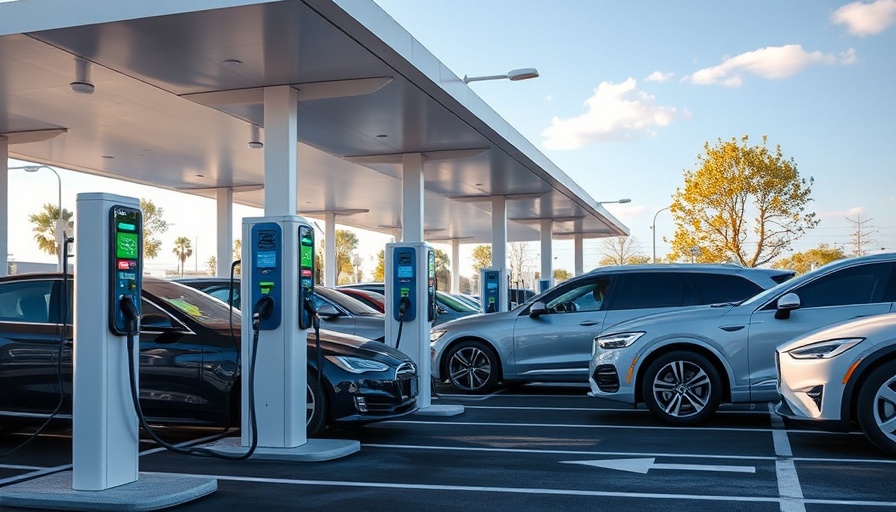
BP Pulse and TA Travel Centers: A New Era of Charging
As electric vehicles (EVs) become increasingly common on our roads, the demand for accessible and efficient charging infrastructure is crucial. BP has recognized this shift, launching its first 400-kilowatt charging hub in Jacksonville, Florida, co-located with a TravelCenters of America (TA) travel stop along I-95. This initiative marks the beginning of an extensive project, with more than 40 similar hubs planned nationwide.
The Significance of Fast Charging
At the heart of this development are the six CCS DC fast chargers that convert the arduous task of charging into a quick pit stop. Each of the 12 bays offers a connector, ensuring drivers can conveniently power up their vehicles on long journeys. This model not only benefits drivers but positions TA as a leader in adapting to the EV charging landscape, illustrating the importance of integrating such facilities into existing travel infrastructures.
A Future Driven by Electric Vehicles
BP's investment in these charging hubs hints at a future where electric vehicles are a norm rather than an exception. The company has ambitious plans to expand its charging network significantly, with over 100 sites in total planned across the US. Market research suggests that while EV drivers do not expect charging to replicate the speed of conventional gas refueling, they prioritize amenities at charging stations. The location of these fast chargers within travel centers is designed to meet these desires.
Challenges and Opportunities for Dealerships
This changing landscape presents both challenges and opportunities for dealership owners and fixed operations directors. With the shift towards electric vehicles, traditional dealerships must adapt their business models and explore new revenue streams. Offering charging stations at dealership locations could become a competitive advantage, positioning dealerships as convenient stops for EV owners.
Broader Industry Implications
BP's partnership with TA Travel Centers comes on the heels of competitors like Love's Travel Stops announcing similar commitments to install EV chargers at all future travel stops. As the industry moves forward, it’s clear that the integration of EV infrastructure is no longer an afterthought. It’s part of a comprehensive strategy that addresses the evolving needs of consumers and the industry at large.
Conclusion
As BP and TA lead the charge in electric vehicle infrastructure, the broader automotive industry must keep pace. The future will demand not only the installation of EV chargers but a cultural shift that embraces electric mobility. For dealership professionals, understanding these trends and planning accordingly is key to thriving in a future defined by electric vehicles.
 Add Row
Add Row  Add
Add 




Write A Comment